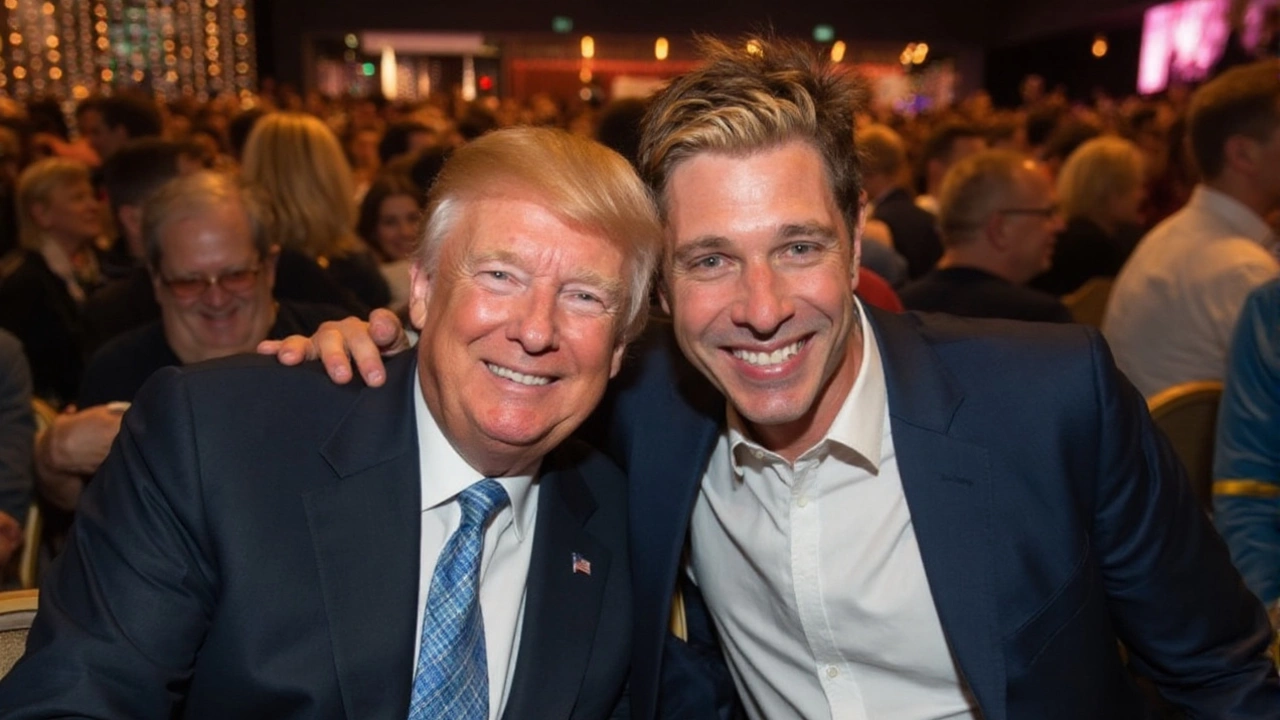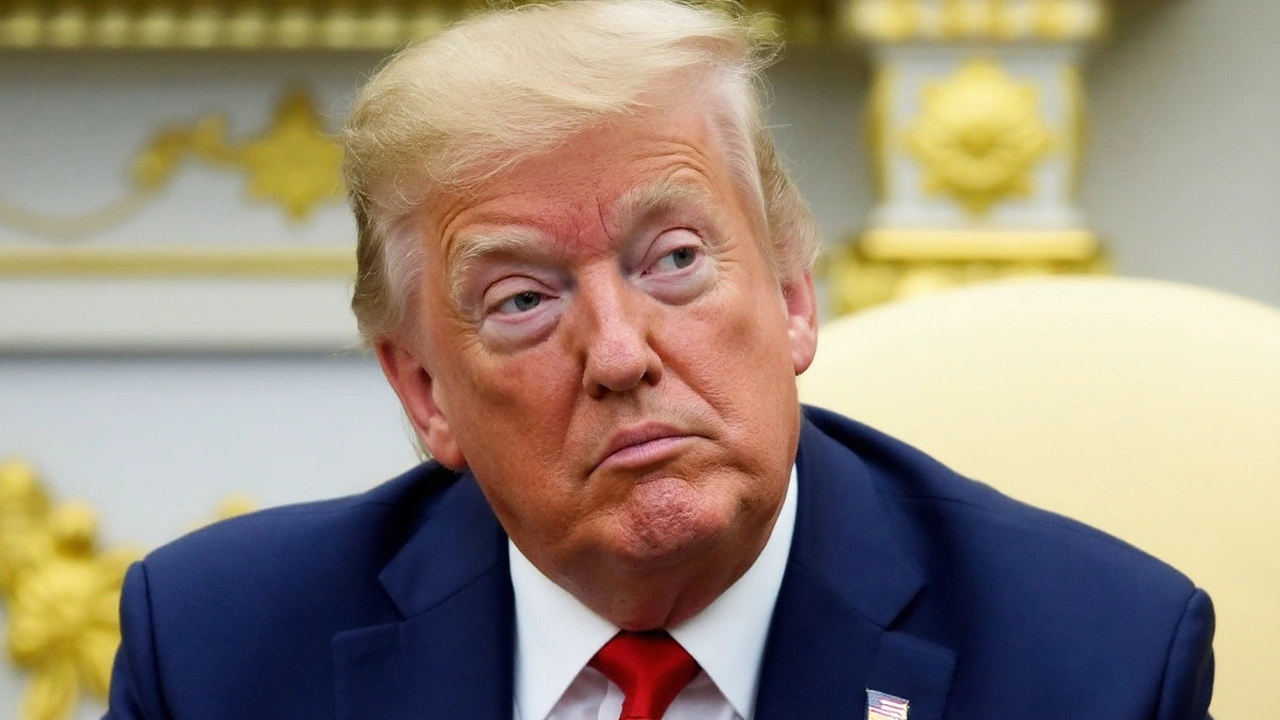A two-word hashtag wrongly declared a sitting president dead—and it took less than a day to flood feeds. The phrase Trump is Dead rocketed across social platforms on Friday, pushing wild speculation about President Donald Trump’s health and even claims that he was missing. By Saturday, the online firestorm fizzled when fresh photos showed the 79-year-old president golfing with his granddaughter, smiling and very much alive.
The rumor didn’t come out of thin air. It followed Vice President JD Vance’s recent interview with USA Today, where he said he was prepared to step in if there were a “terrible tragedy.” That line, lifted from a broader conversation about continuity of government, ran headfirst into an unusual midweek lull in the president’s public schedule. Trump hadn’t appeared on camera since Tuesday’s cabinet meeting. Add an image from earlier in the week that seemed to show a bruise on his hand, and the internet did what it does best—connect dots that weren’t actually connected.
Within hours, posts citing the lack of new official footage and the supposed “disappearance” of the president piled up. Some users tried to juice engagement with cash-bait promises: a viral template offered $500 to anyone who liked a post if the rumor proved true. Skeptics quickly pushed back, recalling how similar death hoaxes trailed Trump during his COVID-19 infection and have dogged other public figures for years. But pushback wasn’t enough to stop the algorithm from elevating the most attention-grabbing claim.
How the rumor took off
Three ingredients fed the frenzy: a vague comment from a high-ranking official, a brief break in public appearances, and an ambiguous photo detail. Each piece on its own was mundane. Together, they produced a story that felt plausible to people primed by years of nonstop political drama.
First, Vance’s comment. Vice presidents are expected to be ready, always. That’s the job. Stripped of context and recirculated as a screenshot, the phrase “terrible tragedy” read like foreknowledge to some users. Second, the calendar gap. Presidents sometimes go stretches without on-camera events, especially when meetings are closed, travel planning is underway, or weekends are near. But with Trump, whose style often features frequent appearances and running commentary, any silence stands out. Third, the bruise. Public figures, especially those in their late seventies, show normal signs of aging—bruising among them. The internet treated it as a clue.
Then came the engagement machines. Accounts with little history began repeating the claim or demanding proof of life. Threads filled with demands for new video. Others leaned on old tropes—references to past cover-ups, jokes about doubles, and recycled memes. The longer no new footage surfaced, the more confident the rumor sounded. In reality, there was nothing to update. And then, there was something: on Saturday, photos circulated of Trump on a golf course with his granddaughter, ending the speculation in a single frame.
The White House didn’t issue a formal statement, and it didn’t need to. The images spoke for themselves and were quickly picked up by political reporters and shared across platforms. By late afternoon, the trend had largely flipped from claims of death to jokes about yet another internet hoax.

Why these hoaxes spread—and what to check
Health rumors are catnip online because they blend urgency, mystery, and the sense that “someone is hiding something.” They spike around older leaders and times of high political tension. Trump is the oldest person ever sworn in as U.S. president, taking the oath for a second term at 78 and turning 79 on June 14 this year. Age invites scrutiny; scrutiny invites gossip; gossip invites clicks.
Platforms reward engagement, not accuracy. Posts that make you gasp—Is the president dead?—get shared. Engagement-bait like cash promises or shock statements travels far before facts catch up. Accounts that don’t fear embarrassment go even harder, because deleting a wrong post costs nothing. By the time proof arrives, the lie has outrun the truth.
There are simple checks anyone can make when a claim like this appears:
- Look for new images or video from the presidential press pool. If nothing is public yet, that’s not proof of anything—pool reports and photos often trail events.
- Check multiple mainstream outlets. When a head of state dies or is incapacitated, real newsrooms move fast and in unison.
- Watch for signs of normal activity: the daily schedule, local sightings with timestamps, or routine travel markers. Absence of evidence is not evidence of absence.
- Beware engagement bait. Promises of money, giveaways, or rewards for likes are red flags.
It’s also worth separating two different scenarios: health rumors versus an actual transfer of power. If a U.S. president dies in office, there’s no mystery about what happens next. The vice president is sworn in as president, usually within hours, and the government announces it immediately. If a president is temporarily unable to serve, the 25th Amendment provides a clear process to hand authority to the vice president and then return it when able. Neither process happens in secret.
The Vance interview was a useful case study in how context gets stripped online. In a standard readiness answer, a vice president says he’s prepared to serve “if needed.” That reads one way in a policy Q&A and another when pasted above a trending death rumor. The line became a plot point for a story people wanted to believe, not a signal that something was actually happening.
The bruise on Trump’s hand followed the same pattern. A single detail was elevated into evidence with no supporting facts. Public figures undergo frequent medical checks, travel, shake hands, and golf. Minor bruises are common and rarely newsworthy. But in a rumor cycle, every pixel becomes a clue, even when it isn’t.
The golf photos broke the loop. They gave people something current and concrete to point to. They also reminded everyone how quickly observable reality can settle an online dispute. While the White House chose not to pile on with a formal rebuke, the images were enough to cool the hashtag and reset the conversation.
There’s a broader media lesson here. False reports about a leader’s death are as old as newspapers, but the mechanics have changed. Today, a single provocative post can plug into a network of accounts built to amplify outrage and harvest reach. A rumor can go worldwide in minutes, sustained by repetition rather than reporting. That puts more pressure on readers to pause, verify, and resist the urge to fill gaps with speculation.
It also puts pressure on platforms. Health hoaxes aren’t just annoying; they can spook markets, trigger security jitters, and crowd out real news. Companies say they label or throttle false claims, but response times vary, and bad actors adapt. Clearer labels on unverifiable claims, faster context from authoritative sources, and tougher penalties for engagement bait would help.
For the political class, the episode is a reminder that silence can be meaningful without being ominous. Presidents take unscheduled time. They hold private meetings. They step away before weekends. And sometimes, they play golf with family. The absence of a fresh clip is not a constitutional crisis.
By Saturday evening, the storyline had flipped from panic to punchline. The president’s brief public pause—spun into a grand conspiracy—ended with a family outing on the fairway. The rumor burned bright, then burned out. What lingers is the same lesson after every viral hoax: speed favors fiction, but the facts still show up. You just have to give them time.

Arlen Fitzpatrick
My name is Arlen Fitzpatrick, and I am a sports enthusiast with a passion for soccer. I have spent years studying the intricacies of the game, both as a player and a coach. My expertise in sports has allowed me to analyze matches and predict outcomes with great accuracy. As a writer, I enjoy sharing my knowledge and love for soccer with others, providing insights and engaging stories about the beautiful game. My ultimate goal is to inspire and educate soccer fans, helping them to deepen their understanding and appreciation for the sport.
view all postsWrite a comment